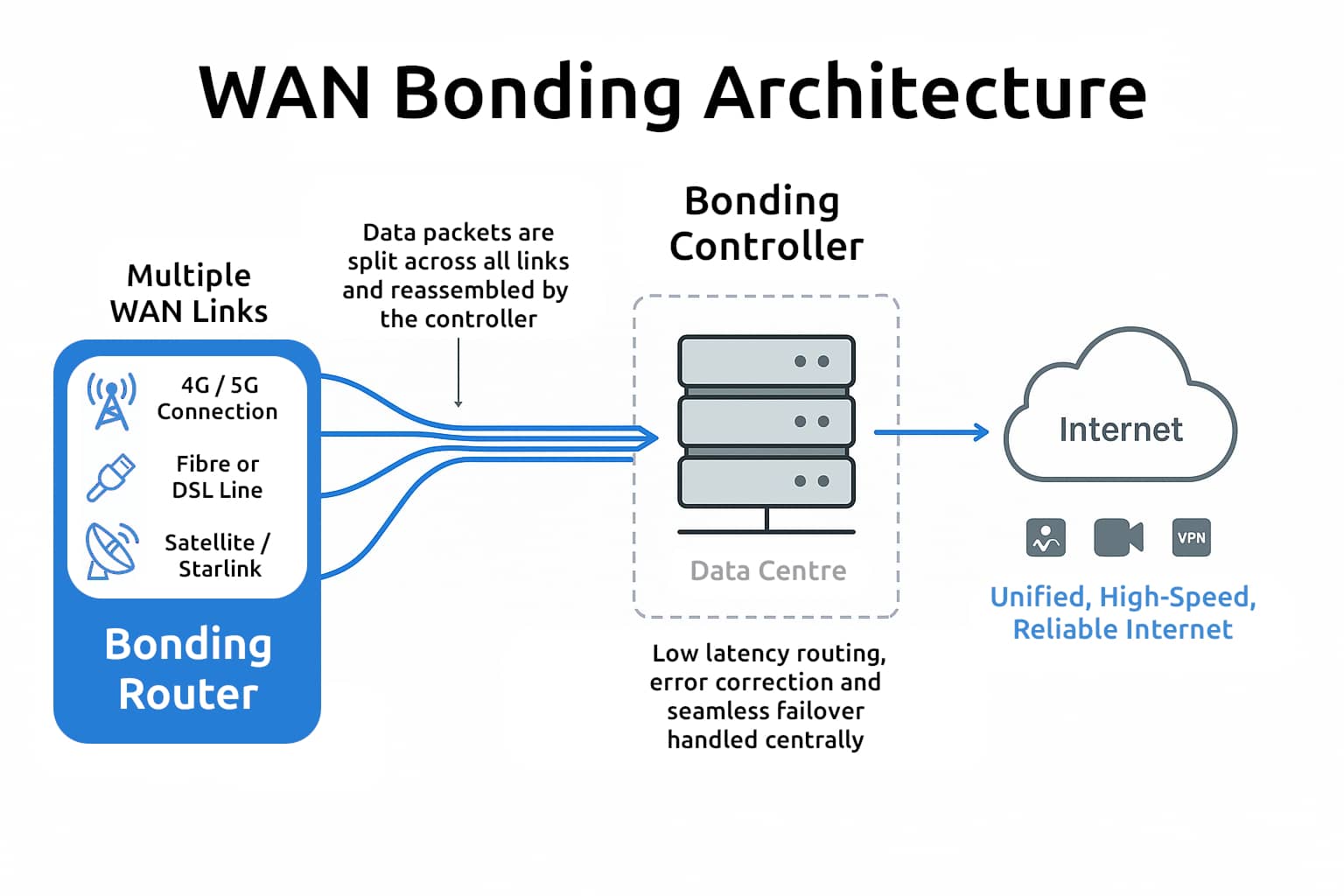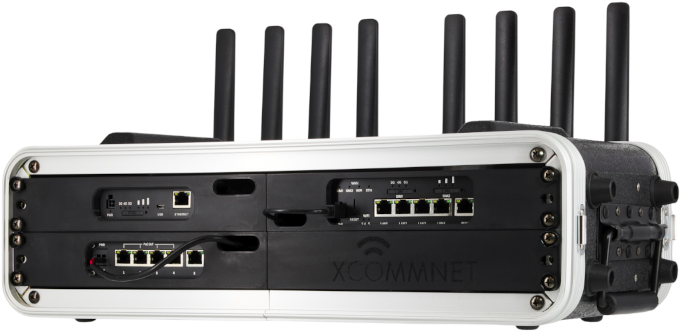Understanding WAN Bonding
WAN Bonding is a networking technique that merges several internet connections, such as fibre, cellular, or satellite, into a single logical connection. The result is a faster and more resilient internet experience that can handle high-demand applications even when individual links vary in quality.
True bonding operates at the packet level. Each packet of data is distributed across all available links, then reassembled by a bonding controller or server in a data centre. This differs from simple load balancing or failover, which only shift whole sessions between links rather than combining their capacity.

Diagram: Typical WAN Bonding architecture showing multiple links connected to a bonding controller in a data centre.
Because of this architecture, you need more than a single router. A true bonding setup requires an external bonding controller hosted in a high-quality data centre. This controller manages packet sequencing, link health, and latency compensation to deliver smooth, uninterrupted connectivity.
